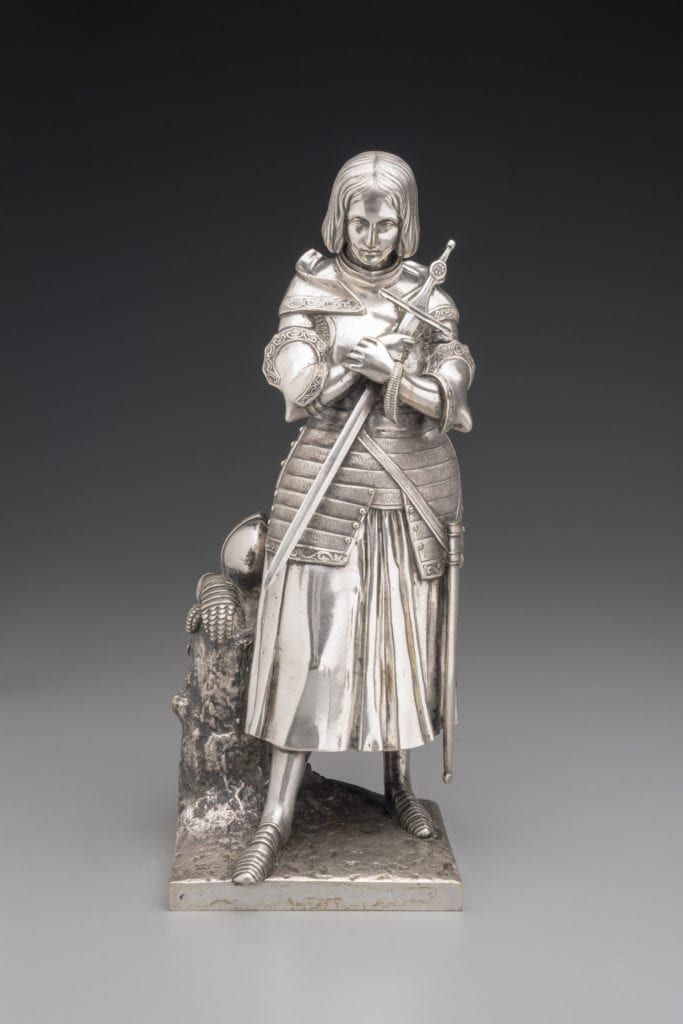Joan of Arc Praying

ABOUT THE ARTWORK
Who made it?

|
Marie Christine Caroline Adélaïde Françoise Léopoldine d’Orléans was the third daughter of Louis Philippe I, King of France. The princess’s artistic talents were recognized at an early age, and she became the student of the painter Ary Scheffer when she was only nine years old. Eventually, on Scheffer’s advice, she shifted her focus to sculpture.
Marie d’Orléans’ work and life were cut short by pulmonary tuberculosis. It is believed that much of her later work has a melancholic mood, possibly influenced by her illness. Her sculptures of Joan of Arc were quite popular, and many reproductions were made in the years following her death.
|
What’s going on in this work?

Marie d’Orléans was interested in French Medieval history, especially the life and legacy of Joan of Arc, the heroine of the resistance to the English occupation of France during the Hundred Years War and a patron saint of France. Her first sculpture of the saint was a small equestrian study. Joan of Arc Praying was a later sculpture created at the request of her father, who wanted a life-size statue of Joan of Arc for the palace at Versailles. Initially sculpted from terracotta and exhibited to favorable reviews at the Salon of 1837, a full-scale marble was made for Versailles with the assistance of professional carvers.
This silvered bronze sculpture may have been reproduced from that original terracotta model due to its small scale. Joan of Arc is shown with a short pageboy haircut and wearing full plate armor. Her helmet and gauntlets rest on a stump beside her. She stands with her sword to her chest, and her head bowed, suggesting that she is praying. In this instance, the blade acts as a stand-in for a crucifix and emphasizes her piety.
Take a closer look.

|
Click on the full image of Joan of Arc Praying above to see a larger version of the work. Look closely at the sculpture and use these questions to guide your looking. Share your thoughts with your family, a friend virtually, or with us by responding to this email.
|
To receive the collection in your inbox, join the Raclin Murphy Museum’s mailing list.

About the Article:
Engage with the Raclin Murphy Museum of Art by exploring their collection through background information and reflection questions. For more information on the collections, please visit the Raclin Murphy Museum of Art website.
Learn MoreMay 28, 2020



